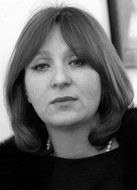Professional female athletes’ adaptation specifics versus hormonal statuses
Фотографии:
ˑ:
Dr.Biol., Associate Professor S.V. Pogodina1
PhD, Associate Professor V.S. Yuferev1
Dr.Med., Professor G.D. Aleksanyants2
1V.I. Vernadsky Crimean Federal University, Simferopol, the Republic of Crimea
2Kuban State University of Physical Education, Sports and Tourism, Krasnodar
The study analyzes the adaptation problems of 16-45 year-old professional female athletes versus their hormonal statuses. Research methods applied were as follows: immunological, biochemical, hematology tests, rheography, spyropneumotaxometry, gasometry and standard/ special load tests to rate the bodily system functionality and adaptability. In the competitive swimming group, the ovulation/ menstrual functionality was analyzed versus the bio-energy resource including the lactic acid generation in the anaerobic-aerobic and aerobic-anaerobic training regimen for the 16-36 and 37-45 year-old subgroups, respectively. The study data showed some age-specific differences in the non-specific adaptation processes – dominated by a smooth activation in the 37-45 year-olds versus some sagging of the activation threshold in the 16-36 year-olds in the first half (8-16 days) of the ovulation/ menstrual cycle. The 37-45 year-old non-ovulating/ menstrual subgroup, the 16-36 year-old ovulating/ menstrual subgroup and oral contraceptives applying subgroup were tested with some chronobiological variations of the hormonal and nervous-control effects on the cardiovascular and respiratory system adaptabilities. The ovulating/ menstrual and non-ovulating/ menstrual subgroups were tested with the highest hemodynamic and respiratory functionality rates in days 8-16 and 20-22 of the cycles, respectively. The oral contraceptives applying subgroup was tested with a notable stress of the key adaptation functions in days 8-16 of the menstrual cycle associated with the minimal estrogen levels.
Keywords: skilled female athletes, age range, hormonal status, ovulation/ menstrual functionality, oral contraceptives, control and adaptation processes.
References
- Gurbanova L.R., Botasheva T.L., Linde V.A. Osobennosti funktsionalnogo sostoyaniya zhenskogo organizma v perimenopauzalnom periode i ego optimizatsiya na fone aerobnykh fizicheskikh nagruzok [Features of perimenopausal functional state of woman’s body and its optimization against the background of aerobic exercise]. Sovremennye problemy nauki i obrazovaniya, 2014, no. 6, 1096 p.
- Shakhlina L., Litisevich L.V. Reproduktivnoe zdorovye zhenschin-sportsmenok: problemy i puti ikh resheniya [Reproductive health of female athletes: problems and solutions]. Sportivnaya meditsina, 2007, no. 1, pp. 11–22.
- Berga S., Naftolin F. Neuroendocrine control of ovulation. Gynecological Endocrinology, 2012, vol. 28, no. S1, pp. 9–13.
- Carlo C., Michela C., Silvia P. Algorithms, modelling and VO2 kinetics. European Journal of Applied Physiology, 2011, vol. 111, no. 3, pp. 331–342.
- Carter J. R., Lawrence J. E. Effects of the menstrual cycle on sympathetic neural responses to mental stress in humans. J. Physiol., 2007, vol. 585, pp. 635–641.
- Chapman А. В., Zamudio S., Woodmansee W. et al Systemic and renal hemodynamic changes in the luteal phase of the menstrual cycle mimic early pregnancy. Am. J. Physiol.,1997, vol. 273 (42), pp. 777–782.
- Christensen A., Bentley G. E., Cabrera R. et al Hormonal regulation of female reproduction. Hormone and Metabolic Research, 2012, vol. 44 (8), pp. 587–91.
- Crewther B. T., Hamiltonz D. K. Casto et al Effects of oral contraceptive use on the salivary testosterone and cortisol responses to training sessions and competitions in elite women athletes. Physiology & Behavior, 2015, vol. 147, pp. 84–90.
- De Jonge X. J., Han A., Thompson B. Oral contraception and the menstrual cycle in exercise science and sports medicine research – Should it be considered?: A review of menstrual cycle verification methods used in research investigating exercise performance over the menstrual cycle. Journal of Science and Medicine in Sport, 2015, vol. 19, pp. 29–30.
- Pogodina S. V., Aleksanyants G. D. The heartrate variability and hemodynamic response of the female athletes in the age range of 17–45 years. Proc. V International res.-practical conference ‘Fundamental and Applied Sciences today’, no. 1, 2015, pp. 1–3.




 Журнал "THEORY AND PRACTICE
Журнал "THEORY AND PRACTICE